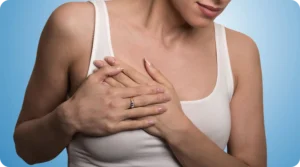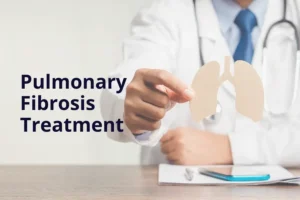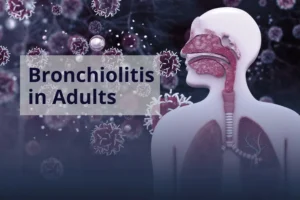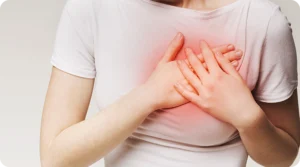How to do a Self-Breast Examination? (Explained by a Breast Specialist)
Namaste,
I’m Dr. Arundhati Marathe Lote, a breast cancer surgeon. But before anything else, I’m a woman, just like you. And today, I want to talk to you not from behind a consultation desk, but as I would to my sister, my friend, or my patient about something very simple yet incredibly powerful: Self-Breast Examination.
You’ve probably heard about it in passing, in a health camp, a social media post, or a friend’s story. But maybe no one sat down and explained to you how to do it, when to do it, and what to really look out for.
So let’s do that. Together.
Why am I telling you this?
Every day in my clinic, I see women from diverse backgrounds; some come with a lump they’ve just noticed, while others arrive with months of quiet worry. And many times, they say the same thing: “I wish I had checked earlier.”
Self-breast examination (or SBE) is not about becoming your own doctor. It’s about becoming familiar with your own body so that if something changes, you’re the first to notice.
And believe me, your hands can become your first line of defense.
When to do breast self-examination?
If you’re above 20, you should begin examining your breasts once a month. Not every day, just once. That’s enough.
If your periods are regular, the best time is 4–5 days after your period ends — when your breasts are least tender.
If you’ve stopped having periods, just pick one date every month (like the 1st or 15th), and make it your breast awareness day.
Think of it as a monthly check-in with yourself.
How should you do a self-breast examination? Breast self-examination steps
I always teach my patients three simple steps. You don’t need any equipment. Just your hands, a mirror, and 5–7 minutes of quiet.
Step 1: Look — कभी-कभी सिर्फ देखने से भी बहुत कुछ समझ आता है।
Stand in front of a mirror. Undressed from the waist up. Take a breath. And just observe.
Raise your hands above your head.
Then bring them down. Place them on your hips.
Now, slightly bend forward. Look again.
Do both breasts move together?
Do both nipples rise and fall together?
Is there any dimpling? (breast skin being pulled in on the skin) Any puckering?

Do the nipples look different — pulled in, turned sideways, or flattened?
These may be small signs, but they matter. I’ve had patients who picked up on subtle changes like these, and that early eye saved them years of struggle.
Step 2: Feel — फीलिंग से ही हीलिंग शुरू होती है।
Now lie down, or do this while taking a shower. All you have to do is to raise one arm and use the opposite hand to examine your breast.
👉 Left breast – Right hand
👉 Right breast – Left hand

Use the flat pads of your three middle fingers, as shown in the above figure. Don’t use the tips of the fingers.
Start at the nipple, and move outwards in circular and up-down motions. Cover the entire area from your collarbone to under the breast, and across to the underarm.
Apply firm pressure, just enough to feel your rib cage.
Why firm? Because sometimes, deep lumps hide close to the chest wall. And this pressure helps you find them early.
Don’t forget to check under your arms. I cannot stress this enough.
Sometimes, a cancerous lump spreads to the lymph nodes even before it shows up in the breast itself.
Step 3: Check the nipple
Gently press the nipple once a month to see if there’s any discharge.
Clear fluid can sometimes be normal.
But if the discharge is bloody, black, or green, or if the nipple feels itchy, scabbed, or refuses to heal, then that’s a sign your body needs attention.
When should you consult me?

If you notice:
- A new lump or swelling
- Skin that looks dimpled, like the peel of an orange
- A nipple that looks pulled in or has changed direction
- Any discharge that’s unusual
- An area of persistent itching, thickening, or a sore that isn’t healing
- A lump in the underarm
"But I don’t have a family history of cancer, Doctor..."
I hear this often. But let me gently correct this.
Most women diagnosed with breast cancer — more than 85% — have no family history.
It can happen to anyone. That’s why self-breast examination is for everyone.
What about mammograms?
That’s the next step in the screening process. Usually:
- From the age of 40 onwards, a yearly mammogram is recommended.
- If you have a strong family history, we may start earlier — around 35.
- But before you get one, let’s talk. Every woman’s risk is different, and your screening plan should be personalised.
Let me leave you with this.
You are not just a patient to me. You are a person with dreams, with responsibilities, with loved ones who care about you.
If there’s one habit I could ask you to build, it’s this:
👉 Once a month, check your breasts.
Give yourself those 5 minutes. It’s not about fear, it’s about awareness.
And if you ever feel unsure or just want someone to talk to, I’m here.
At Panacea Clinic, we don’t just treat breast conditions. We support women with answers, empathy, and time.
Latest Blogs

How to do a Self-Breast Examination? (Explained by a Breast Specialist)
Namaste,I’m Dr. Arundhati Marathe Lote, a breast cancer surgeon. But before anything else, I’m a woman, just like you. And today, I want to talk

Understanding Pulmonary Fibrosis Treatment: A Complete Guide for Families
As a chest specialist practising in Nagpur for over twelve years, I have had the privilege of helping hundreds of families understand pulmonary fibrosis treatment.

Bronchiolitis in Adults: The Hidden Cause Behind Your Persistent Cough
Are You Experiencing Unexplained Breathing Difficulties That Just Will Not Go Away? A few weeks back, I had an interesting case. He was a man

How Breast Cancer Affects Sleep?
It is 3:17 AM. You are staring at the ceiling again, your mind racing between tomorrow’s chemotherapy session for breast cancer and your daughter’s upcoming

How to Know When Respiratory Allergy Needs Expert Care in Nagpur
“Doctor sahib, my son has been coughing for three weeks now. We have tried everything – ginger tea, tulsi, and even visited the local doctor

What is the Difference Between Asthma and COPD?
Namaste! I’m Dr. Sameer Lote, and I’ve been treating respiratory conditions for over 15 years. Just last week, I had an experience that perfectly captures
